

| This observatory, one of the architect's early works, is an important surviving landmark of Expressionist architecture, an architectural movement that developed in Europe during the first decades of the 20th century. The movement was especially important in Germany until the Nazi assumption of power when this style was outlawed as degenerate. Mendelsohn, a Jew, came to the United States where he designed a number of important buildings, among them beautiful synagogues. (See the synagogue in Cleveland and in St. Louis.) Some architects, for example Hans Scharoun (see my Berlin index), continued to work in an expressionist idiom and today other architects are sometimes defined as neo-Expressionist--like Frank Gehry.These pictures were taken in pouring rain and after a laborious climb, for my arthritic knees, up to Telegraph Hill. | ||
Astrophysical observatory housing a solar telescopeMendelsohn's preferred material for his sculptural form was concrete; however, various problems with this material led the structure to be primarily brick core overlaid with stucco. |
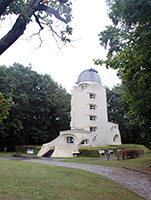 |
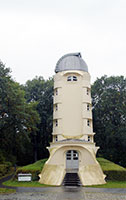 |
| Expressionist architects thought of their buildings as art and in fact, they are sometimes close to sculpture with organic/sculptural forms, which sometimes have an emotional quality. Originality as well as a visionary quality was important to these architects. The form of this building is not entirely related to its function! | ||
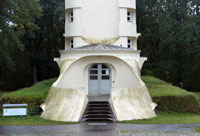 |
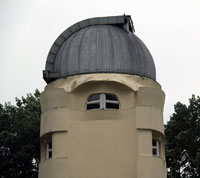 |
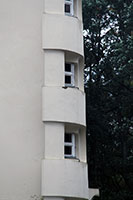 |
Views of the side | ||
 |
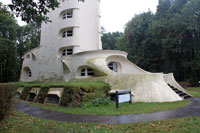 |
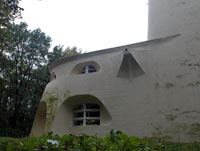 |
Views of the back | ||
 |
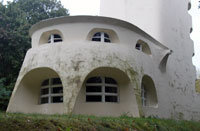 |
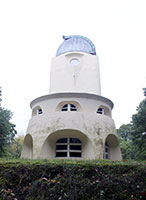 |
 Click here to return to index of art historical sites.
Click here to return to index of art historical sites.
 Click here to return to index of artists and architects.
Click here to return to index of artists and architects.
 Click here to return to chronological index.
Click here to return to chronological index.
 Click here to see the home page of Bluffton University.
Click here to see the home page of Bluffton University.

